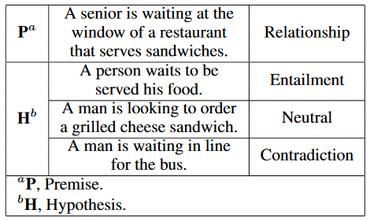Search Results for author: Philip Schulz
Found 10 papers, 4 papers with code
Rejection via Learning Density Ratios
no code implementations • 29 May 2024 • Alexander Soen, Hisham Husain, Philip Schulz, Vu Nguyen
Instead, we propose a different distributional perspective, where we seek to find an idealized data distribution which maximizes a pretrained model's performance.
Unsupervised Cross-Lingual Transfer of Structured Predictors without Source Data
1 code implementation • NAACL 2022 • Kemal Kurniawan, Lea Frermann, Philip Schulz, Trevor Cohn
Providing technologies to communities or domains where training data is scarce or protected e. g., for privacy reasons, is becoming increasingly important.
PTST-UoM at SemEval-2021 Task 10: Parsimonious Transfer for Sequence Tagging
no code implementations • SEMEVAL 2021 • Kemal Kurniawan, Lea Frermann, Philip Schulz, Trevor Cohn
This paper describes PTST, a source-free unsupervised domain adaptation technique for sequence tagging, and its application to the SemEval-2021 Task 10 on time expression recognition.
Causal Bias Quantification for Continuous Treatments
no code implementations • 17 Jun 2021 • Gianluca Detommaso, Michael Brückner, Philip Schulz, Victor Chernozhukov
We extend the definition of the marginal causal effect to the continuous treatment setting and develop a novel characterization of causal bias in the framework of structural causal models.
PPT: Parsimonious Parser Transfer for Unsupervised Cross-Lingual Adaptation
1 code implementation • EACL 2021 • Kemal Kurniawan, Lea Frermann, Philip Schulz, Trevor Cohn
Cross-lingual transfer is a leading technique for parsing low-resource languages in the absence of explicit supervision.
Grounding learning of modifier dynamics: An application to color naming
1 code implementation • IJCNLP 2019 • Xudong Han, Philip Schulz, Trevor Cohn
In addition, we present a model that operates in the HSV color space.
Variational Inference and Deep Generative Models
no code implementations • ACL 2018 • Wilker Aziz, Philip Schulz
Using DGMs one can easily design latent variable models that account for missing observations and thereby enable unsupervised and semi-supervised learning with neural networks.
A Stochastic Decoder for Neural Machine Translation
1 code implementation • ACL 2018 • Philip Schulz, Wilker Aziz, Trevor Cohn
The process of translation is ambiguous, in that there are typically many valid trans- lations for a given sentence.
Fast Collocation-Based Bayesian HMM Word Alignment
no code implementations • COLING 2016 • Philip Schulz, Wilker Aziz
In order to make our model useful in practice, we devise an auxiliary variable Gibbs sampler that allows us to resample alignment links in constant time independently of the target sentence length.



